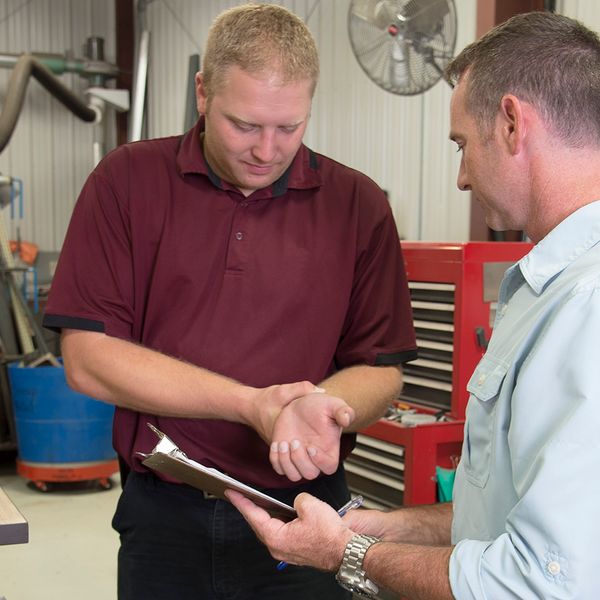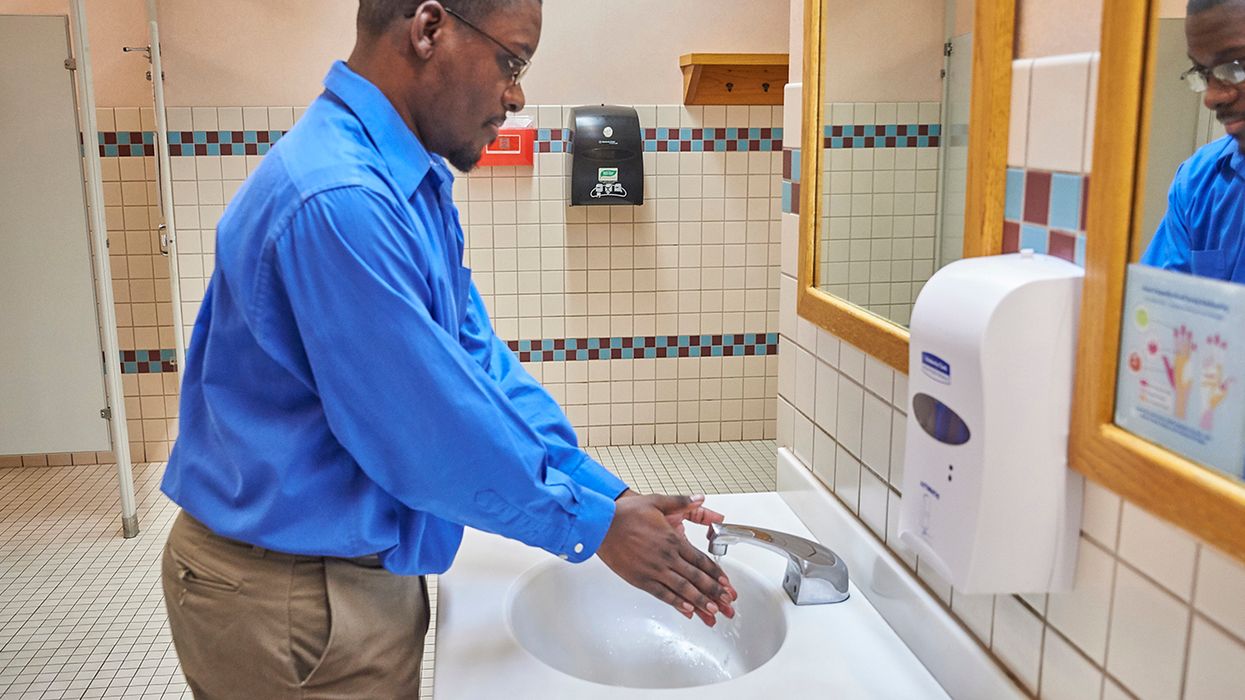Ergonomics Handout
How to prevent back injuries
Don’t assume that no pain means no problem. Most back injuries don’t happen from one lift; they develop over time. Spinal discs don’t have blood or nerves, so workers don’t feel pain or notice problems until something “gives out.” Proper lifting techniques are essential even when workers don’t suspect any concerns or feel any back pain.
- Don’t lean forward. Bending forward puts pressure on the spine. Adjust work surfaces, so workers don’t have to constantly lean forward or grab items at the limit of their reach. Make sure everything the worker needs is within reach without leaning.
- Evaluate the job area. Analyze the jobsite for problems that could cause back strain or lead to injury. Consider changes to prevent back strain, like using mechanical lifting devices or installing adjustable-height fabrication tables. Look for opportunities to improve worker ergonomics or to use ergonomic-friendly tools and equipment.
- Use examples from home. Back injuries can happen at the jobsite or home, so give examples workers can relate to and take home. During training on safe lifting, point out that they can use the same techniques around the house.
- Encourage good posture. Everyone knows that good posture is essential, but not everyone does it. Encourage good posture by including it in back safety training.
- Offer exercise and weight loss programs. Overweight workers are at greater risk of back injury because the weight carried in the belly strains the spine. Exercise and weight loss programs are good for overall health, reducing the risk of back injuries.
- Provide comprehensive training. Telling workers, “keep your back straight and lift with your legs” is not enough. Include techniques on safe lifting procedures for specific job tasks, and emphasize the importance of work breaks, stretching, and asking for help with heavy or bulky items.
Spending a few minutes reviewing safe lifting can help keep the techniques in everyone’s mind. If you remind workers to lift safely, they’re more likely to do it. Using these tips and implementing an ergonomic safety program at your jobsite can reduce your workers’ back injuries and musculoskeletal disorders.
Jobsite Ergonomics
Ergonomics — fitting the worker to job tasks — helps lessen back injuries, muscle fatigue, increases productivity, and reduces the number and severity of work-related musculoskeletal disorders (MSDs). Tasks are the activities a worker performs during a particular job. Some jobs consist of a single task, but most require multiple tasks as follows:
- A jobsite laydown worker’s tasks might include stacking materials, shrink-wrapping pallets, and moving piles of construction materials with a hand cart.
- A laborer’s tasks might include emptying trash and cleaning jobsite trailers.
- A forklift operator’s tasks might include setting cribbing in work areas, re-stacking unstable construction materials, and twisting around to drive in reverse.
Don’t wait until a worker gets hurt before looking for hazards. Take a proactive approach by also talking to workers. Ask questions like:
- Do you have ideas about how to make your job less physically demanding and more efficient?
- Do you work in uncomfortable positions or experience muscle fatigue and discomfort?
It’s best to act as soon as you identify warning signs. These signs include worker fatigue or discomfort, reports of problems, and elevated levels of absenteeism. Early action is vital because MSDs tend to be treatable and less expensive in the early stages but irreversible and costly as they get worse.
Implement an ergonomic process
Finding ways to eliminate awkward postures and repetitive motions usually involve a process of trial and error. In other words, it’s not a one-time effort. Saying that a job has been “fixed” implies that workers can’t improve any further, but there’s always room for improvement.
Consider a few options before making substantial changes because the first solution may not be the best. Remember, making ergonomic improvements is a process. Begin by making a list of tasks with the highest priority.
For each task, write down several potential improvements. Sometimes a single improvement can reduce or eliminate multiple factors. Other times, several changes might be needed to address a single factor.
After listing potential improvements, evaluate each one by asking the questions listed below. Will this improvement:
- Reduce or eliminate the contributing factors and the reasons for them?
- Create new or different contributing factors?
- Reduce or eliminate other problems identified and the reasons for them?
- Increase or decrease productivity and efficiency?
- Be practical from an engineering standpoint?
- Handle the required volume and pace of work?
- Be affordable (is another option less expensive)?
- Be accepted by workers?
- Positively affect worker morale?
- Take a long time to implement?
- Affect the rate of pay or a collective bargaining agreement?
- Require substantial training (is a more straightforward option available)?
Finally, select a few to try out on the jobsite. Set up a trial period to test new tools, equipment, or procedures as part of the evaluation.
Evaluate the effectiveness
During the trial period, evaluate the improvements for effectiveness. Don’t make final decisions until enough time has passed for workers to adjust to the changes. Workers should have a chance to practice using the new job area, tool, equipment, or process. Any new tool or procedure can feel awkward at first. Providing an adjustment period may prevent you from rejecting an otherwise good improvement.
Some modifications may require workers to use new muscle groups or different body parts. They may initially feel tired or sore. Check with workers to see how they think the changes are working. The process of improving the jobsite is not exact. Expect to try out changes, see how they work, and either change or discard them for alternatives.
After a reasonable adjustment period, evaluate each improvement separately by considering the following questions. Has this improvement:
- Had enough time to work (are workers used to the changes)?
- Reduced or eliminated fatigue, discomfort, symptoms, or injuries?
- Reduced or eliminated the contributing factors or other problems?
- Added any new contributing factors or other problems?
- Worked from a financial standpoint?
- Had a positive effect on productivity and efficiency?
- Matched the production requirements of the job?
- Been accepted by workers?
- Been fully implemented in a reasonable amount of time?
- Had a positive effect on absenteeism and turnover rates?
- Been supported with the training needed to make it effective?
An effective way to determine if you reduced or eliminated contributing factors is to go back and observe the jobsite as you did during the initial evaluation. If necessary, you can try a new improvement option or begin the process to make further improvements. If the situation has improved and the risk is lower, move on to the next job on your priority list.
The process of making ergonomic improvements involves looking at equipment and job tasks, trying out improvements, looking again to see if they work, making further changes, and so on. The goal is to remove conditions that could lead to injuries. More often than not, this process reduces injuries, increases productivity, saves money, and improves product quality and job satisfaction.



















































